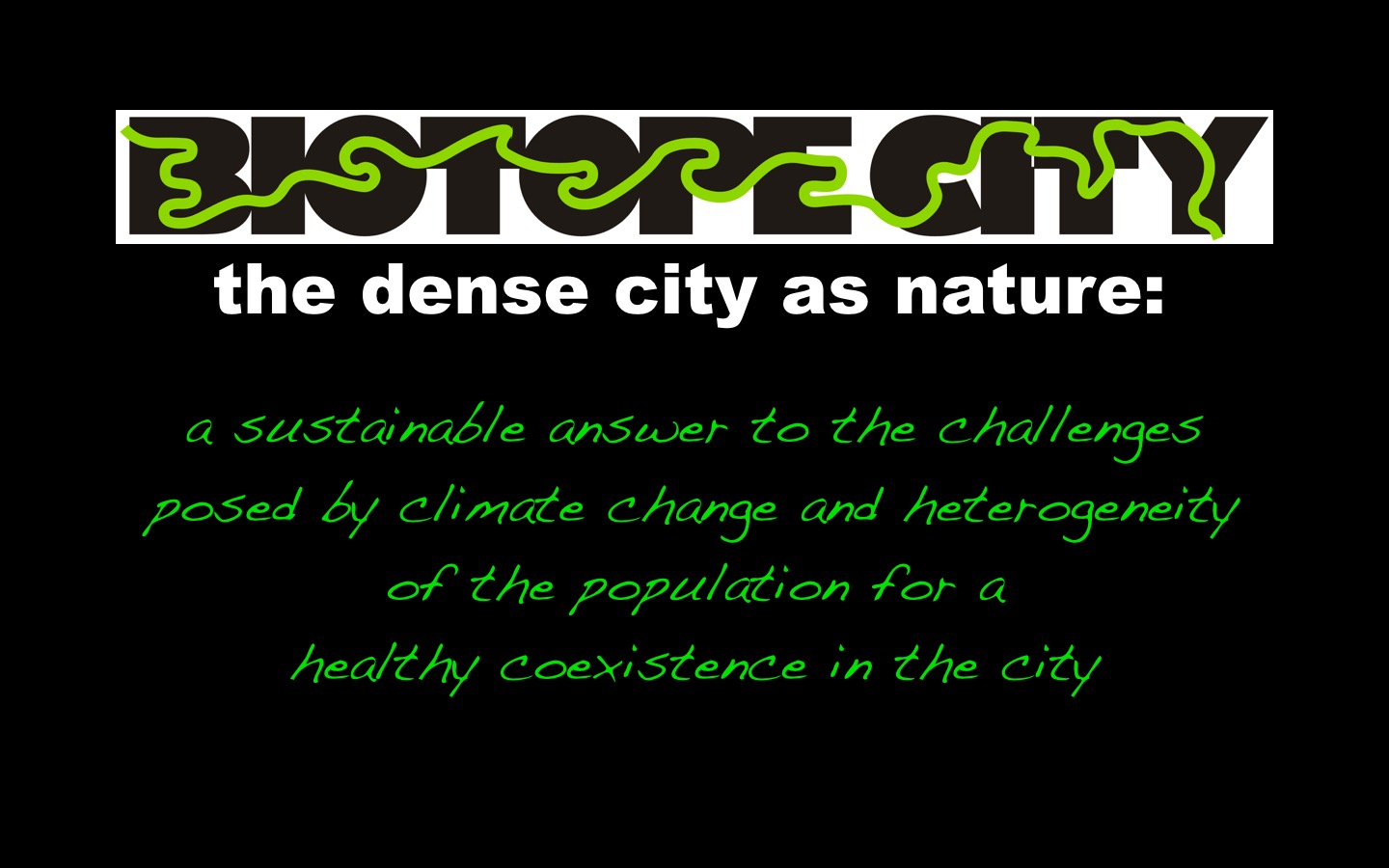Biotope City – the dense City as Nature
an introduction to the topic
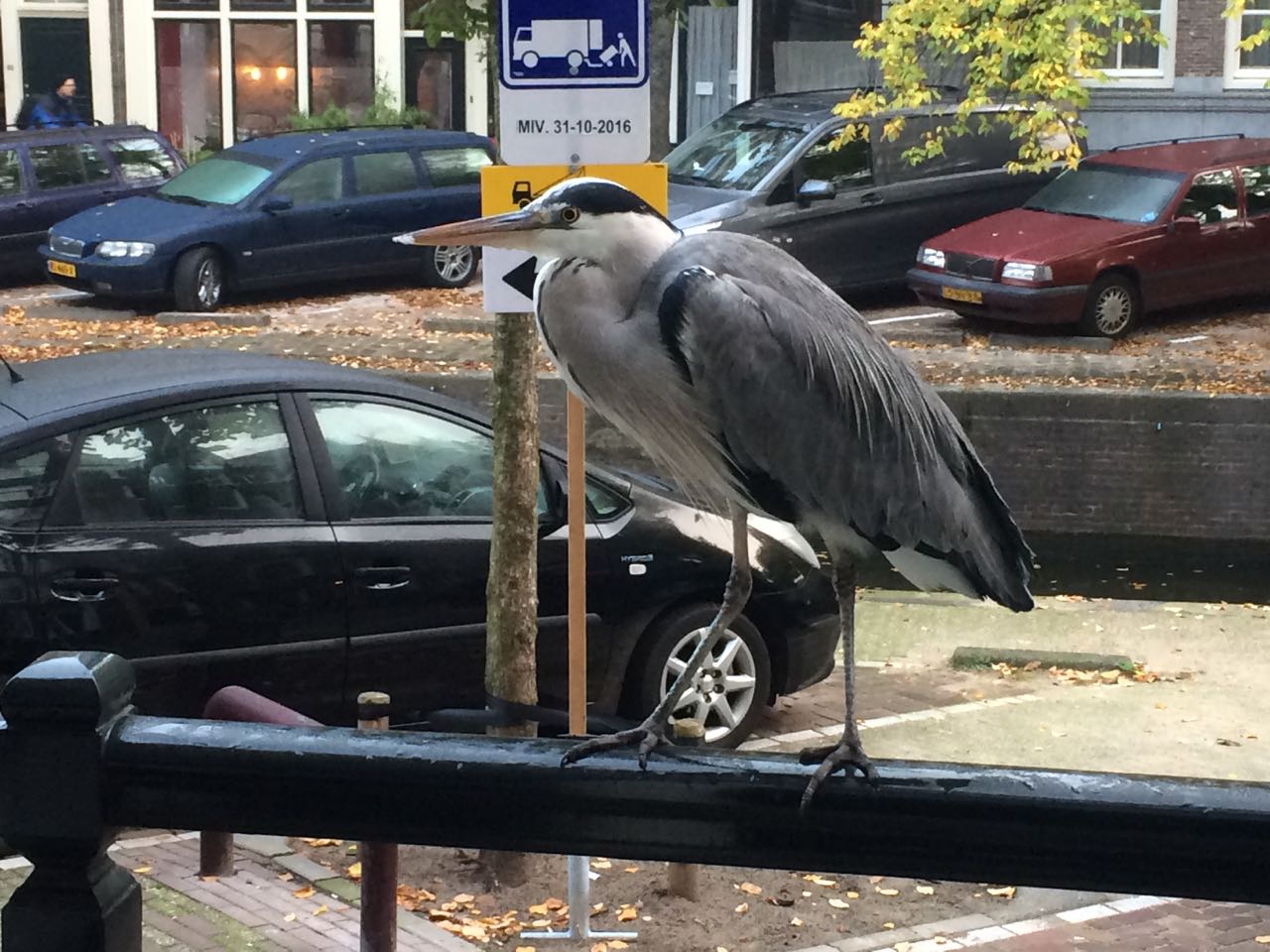
Changed framework conditions
The framework conditions for urban planning have changed considerably in recent decades. We are currently dealing with worldwide developments that have now taken on dramatic dimensions: a global population explosion, 90% of which is taking place in cities and conurbations, global warming, which is increasing faster than was assumed a few years ago, significantly increased urban pollution, a dramatic decline in biodiversity and, finally, a consumption of natural resources that, according to the OECD, will double by 2060.
These trends have long been felt in European cities and are affecting the quality of life through a sharp increase in hot days and tropical nights, an increase in deaths due to particulate matter pollution, flooding caused by prolonged heavy rainfall that overburdens the sewage system, storms and tornadoes of unprecedented intensity that can cover entire roofs. These are trends which, according to all forecasts, will become even more pronounced in the future.
Challenge for urban planning, architecture and other disciplines related to the city
We are urgently requested to take measures to mitigate these developments. This applies in particular to planning and construction, especially since the strong population influx into the cities also results in a high demand for construction.
Fortunately, there is currently widespread attention worldwide to the problem of global warming through Greta Thunberg’s actions, a 21st century Joan of Arc.
But there is more than just climate change. The dense city as nature raises the question:
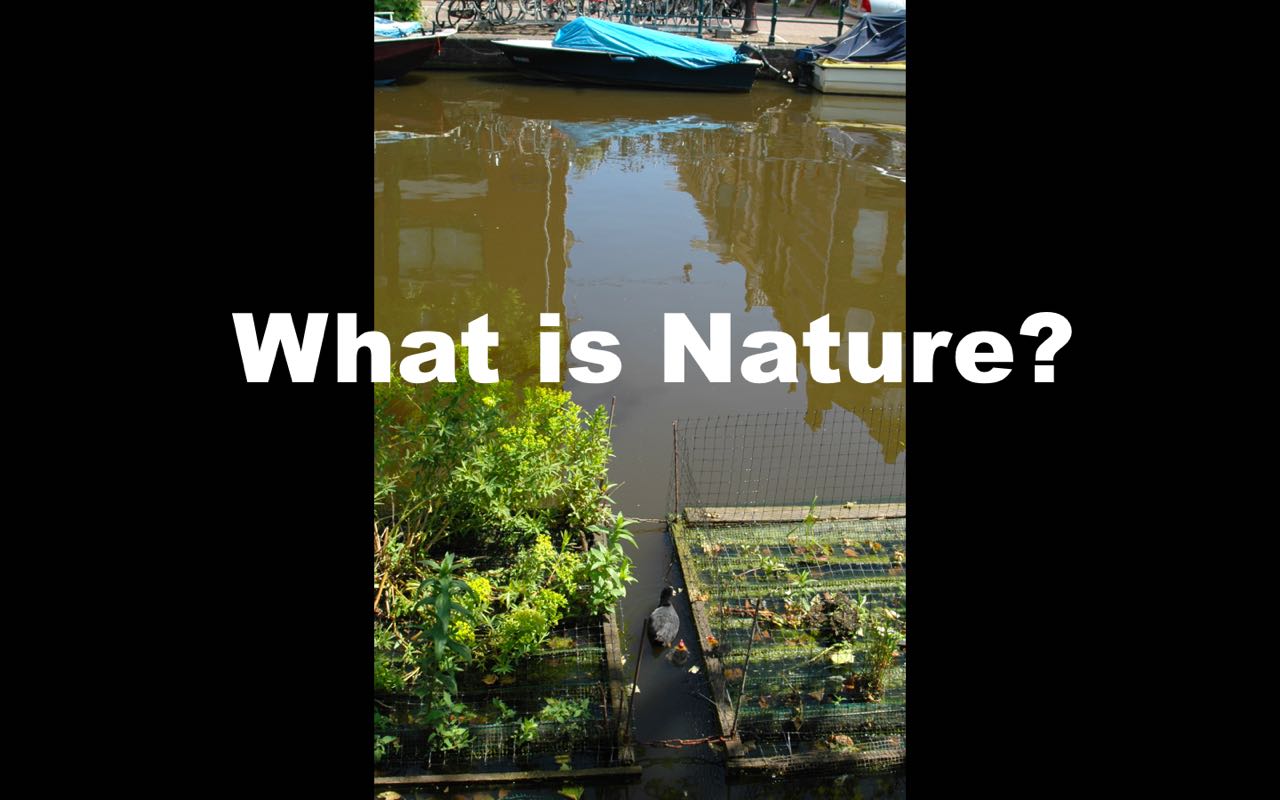
There are very different positions on this. I’m going to give you the viewpoint from which we are proceeding.
Nature is not a fixed state – a state of the world at some fixed point in time, in the present or the past.
Nature is also not something that takes place outside of us humans.
We describe it in this terms:
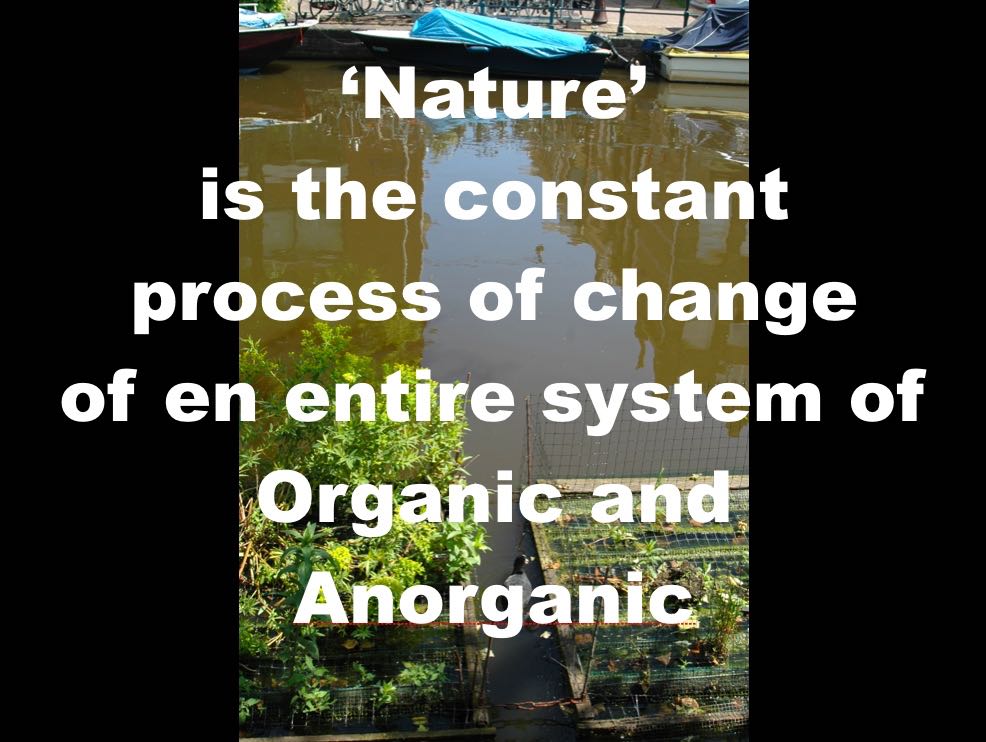
This requires reflection on the relationship between humans and nature and leads to the realization that nature is a complete system that includes us humans.
What does this mean for us in terms of planning and building?
This is the background against which the big classical question must be answered. This question is called:

Nota bene: When we ask this question today, it is about the basic conditions of life in 2019. There are the three dominant ones:

This affects far more than climate change, which is currently the focus of public attention. To point out just an other aspect: On September 9, 2019, the OECD published a report on projections of global resource consumption up to 2060, which, starting from a baseline of 2017, will double by 2060.
What does all that mean?
What mankind has used for free for thousands of years will soon no longer be available in sufficient quantities: Fresh water, clean air, noisy climate, abundant resources, biodiversity.
In addition:
The regenerative powers of nature are drastically decreasing in many places.
What we seem to have forgotten: Nature is not a “treasure trove” but an overall system and we as humans are part of this system. To put it even more pointedly: we are one of the manifestations of this overall system.
So we have to supplement our general question about the ‘how’ of planning + building:

Under current conditions, planning + building must no longer limit itself to create somewhere a green roof and a green façade as a fig leaf.
That means: Homo sapiens, flora and fauna are in the same boat … In the future it will be about cooperating instead of exploiting and supporting the regenerative powers of nature instead of harming them. Because it is so important I repeate it:

This requires reflection on the relationship between humans and nature and leads to the realization that nature is a complete system that includes us humans.
What does this mean for us in terms of planning and building? This is the background too against which the big classical question about our life in urban context has to be answered.
That requires a different view of the city:
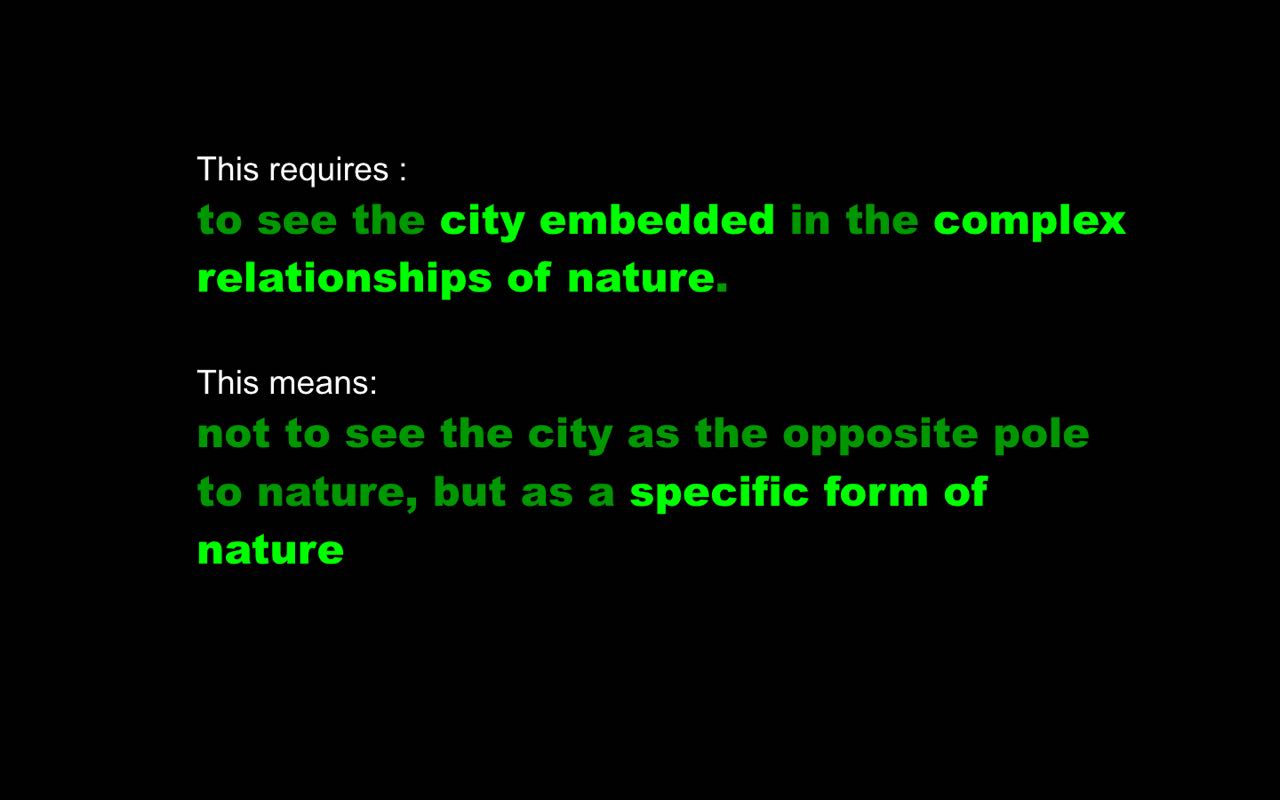
We are involved in nature in the most fundamental way imaginable. We need the composition of the air produced by green. Green, with its many special characteristics, will have to play a central role in urban development in the future if we want to meet the challenges of our framework conditions in an economically and socially viable way. Green, leaf-green is basic for biodiversity, is good for climate regulation, is binding fine substances, is good for rainwater retention and is good for health and psyche. Meanwhile this is widely discussed even in the media. Greenery is fortunately a new, popular topic.
The idea of ‘more green’ has also gained a foothold in the professional world – not only as street green with trees and in the form of green roofs, but also green on the vertical surfaces of buildings.
However, there is still much resistance to green. Against trees because of the fall of leaves in autumn, and even more against green on facades – among citizens primarily because of their ignorance of how to do it cost-effectively without causing structural damage. Among architects more for aesthetic reasons. Among investors because of perhaps unexpected costs of maintainance.

On the other hand, green is often seen – even by its advocates – as just another technical means of equipping cities, a natural-technical element that acts out its properties for our benefit as human beings. In other words, a utilitarian use of this ‘material’ green. People forget that green is part of a comprehensive ecosystem. Also the use of green is more annoying than the use of usual building components as stone, wood, concrete, steel, plastic, glass: Green does not yet present so much when the construction is finished and the keys are handed over, it needs time for growing – but at the other hand it does not stand still in the course of time at the moment you find it enough. It just goes on and on…
Green is something generally different – it is a living element.
In many aspects, it does not penetrate into the consciousness that green is one of the manifestations of nature and is embedded in larger contexts, not to say ‘very large contexts’, which also include ourselves, us humans.
Green is not just a clever machine that gives air to breathe, absorbs water and sucks in fine matter. Green is something fundamentally different, something that is in constant change and interaction with its environment. It is therefore impossible to simply include green in the canon of building materials without focusing on this overall context.
Green in the city also means: living together with flora & fauna – in other words, cohabitation. A cohabitation with insects, birds, small mammals and reptiles in the dense city.
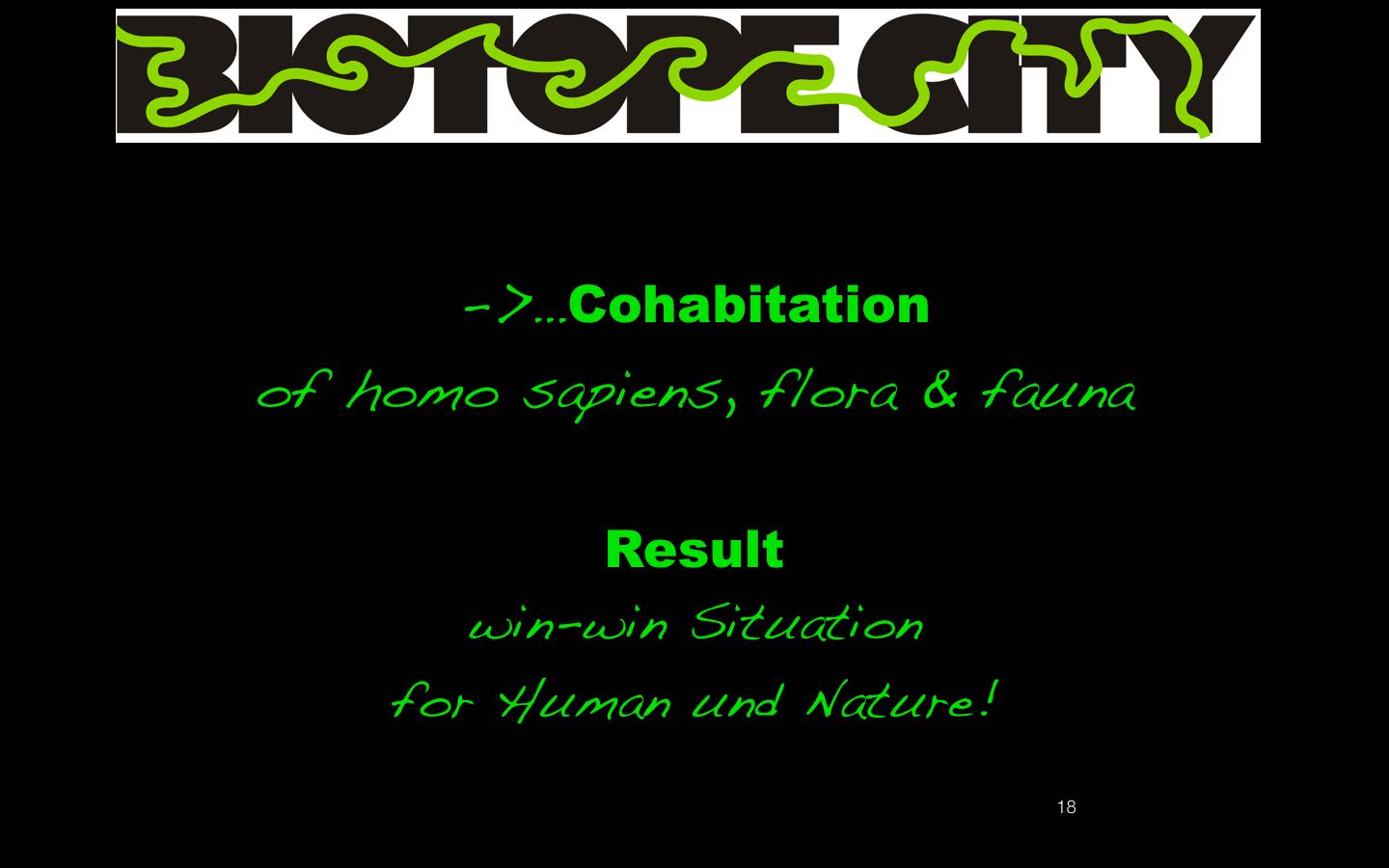
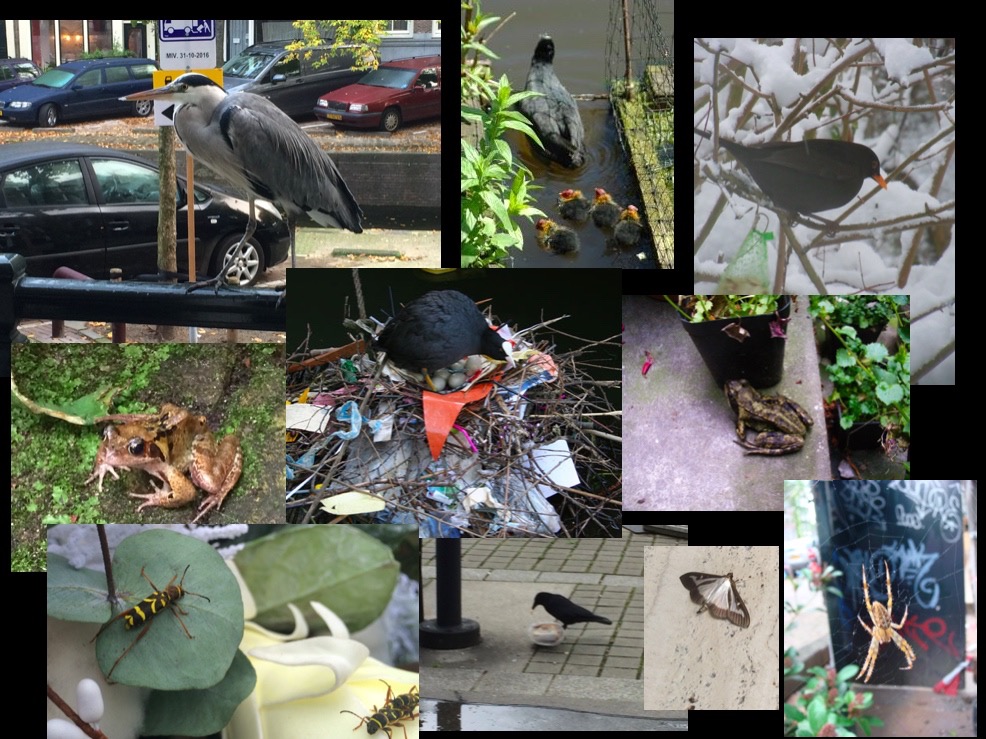
The concept of Biotope City brings all these aspects together: “Biotope City” as a term already signals it: Biotope City – the dense city as nature is a concept that assumes a mutual win-win situation in the coexistence of man and nature even in densely built-up areas.
High density and urbanity are not treated as opposites to nature. Appropriate planning in the dense city simultaneously creates space for flora and fauna. This contributes to climate resilience and enables a healthy living climate and supports biodiversity.
The aim of a view of the city as a biotope city is, to find a clever, conscious integration of nature in the city as a supplement and improvement of our technical and social solutions. And the other way round: to integrate the city into the overall system of ‘nature’ and to alleviate the present and future climatic conditions by making use of certain mechanisms of nature, especially those of the leafy greenery – for mutual benefit: for us humans as well as for flora and fauna.
In some respects, the Biotope City concept requires an adaptation of current procedures and techniques – in a positive sense. It offers the chance of an extended cooperation of disciplines, from urban planners, architects and landscape architects to social scientists, ecologists and vegetation technicians.
This dense city as biotopes is based on three fundamental principles:
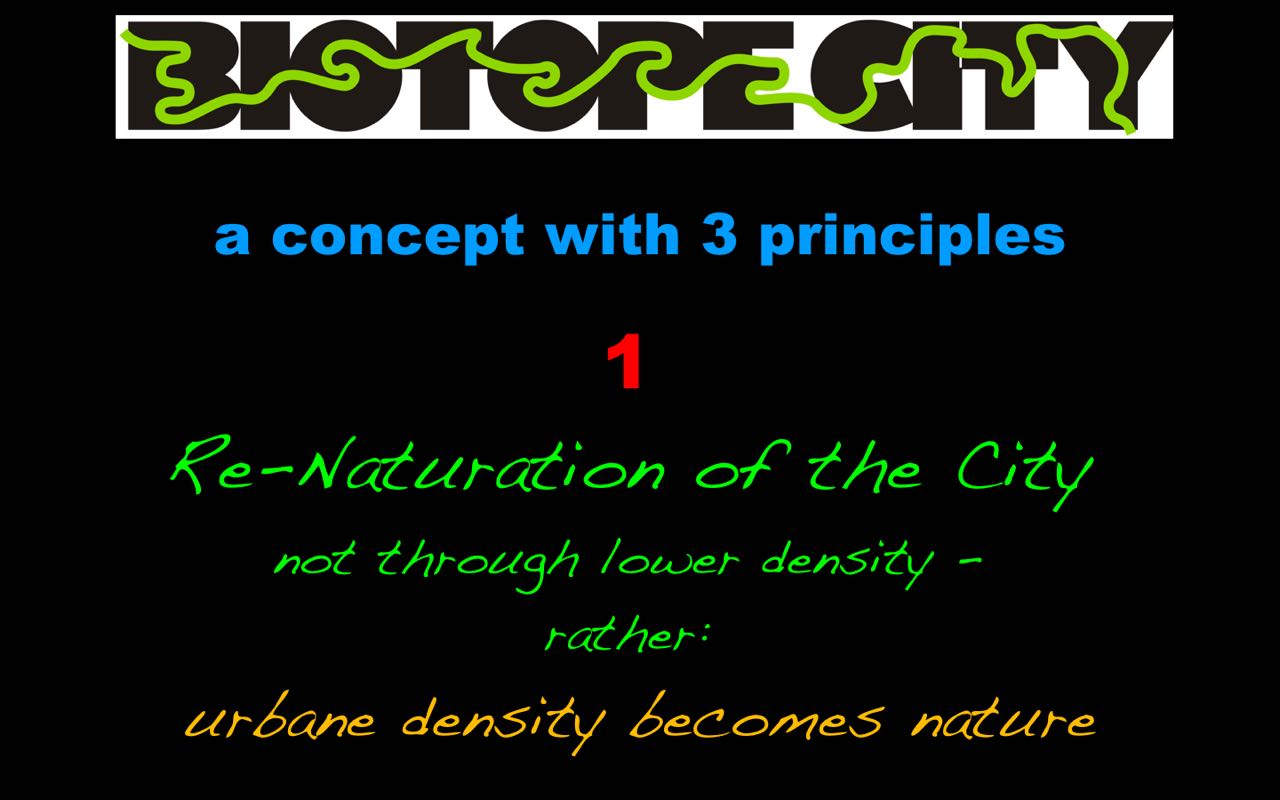
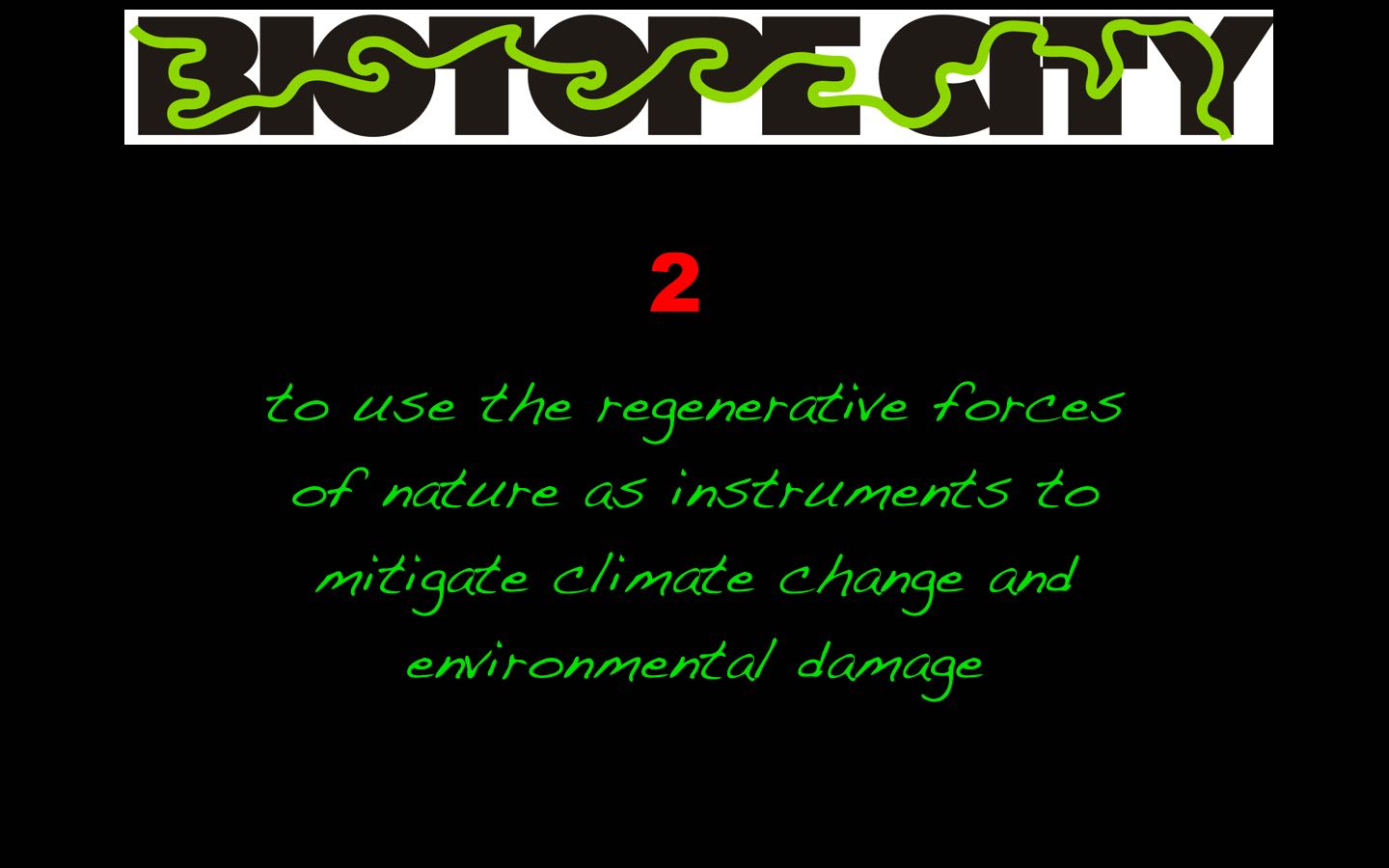

It is therefore a question of a sustainable response to the above mentioned challenges posed by climate change, loss of biodiversity and the heterogeneity of the population: We have to create the conditions for healthy urban coexistence: a sustainable city of a humane, environmentally sound society, and this city has to be highly densely populated and extremely green. This will also be a city that has a different, new beauty to the one we, trained in modernity, are used to.
It is about the breakthrough to a new, sustainable form of urban development, climate-resilient, ecological, resource-saving.
Nota bene: That’s by no means just a nice idea, but a necessity in a world in which we are in the process of hitting the wall with our utilitarian reduced understanding of the city.
All this is not about an unfulfillable wish: all building blocks for such planning + building already exist, the techniques have been developed. But there are a number of difficulties to overcome. Common procedures, common solutions and the entire body of rules and regulations for building are not yet geared to them.
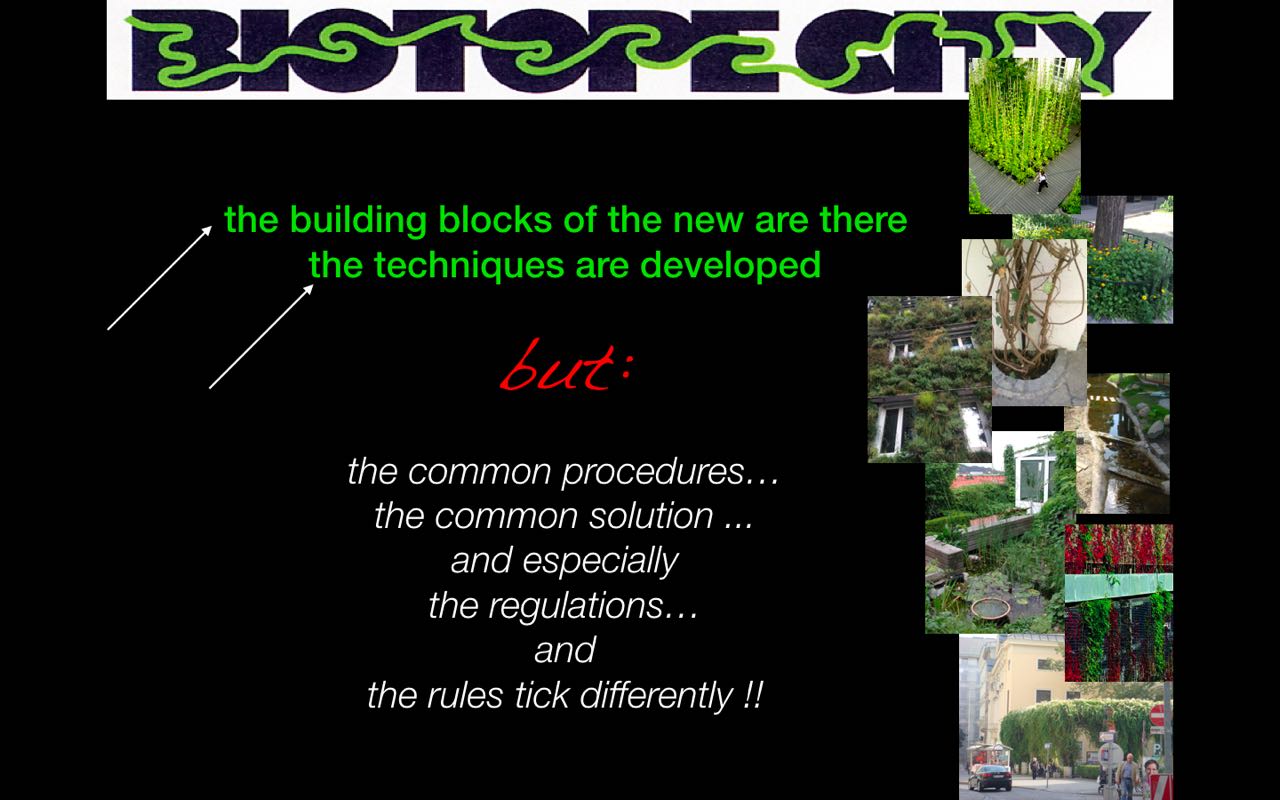
Tthis concept is in no sence a distant dream of the future: it is already a reality in the making: In Vienna such a quarter is under construction, the Biotope City Wienerberg.
The Biotope City Wienerberg demonstrates: a biotope city is possible under nowadays conditions.
Why in Vienna? Vienna is in a similar situation to Berlin, to Paris and other big cities : the city is confronted with a considerable annual population growth. At the same time, the forecasts for the average temperature increase in the Alpine region itself are twice as high as the global average. The city is therefore faced with the task of both creating housing for newly arriving residents, especially in the lower income sector, and at least securing the living conditions of its inhabitants as a whole, but if possible improving them in view of the circumstances that have already arisen.
The city, developers and architects have ventured into uncharted territory with the planning of a new development area of 5.4 hectares according to the Biotope City model: this quarter with about 1.000 flats, a school, bureaus, a hotel and small shops will be completed by the end of 2020. It will demonstrate a high quality of life and affordable, affordable housing, 2/3 in the social sector. Very dense, very green, with diverse native flora and habitat possibilities for fauna, without cars on the EC zone and with an extensive offer of community facilities and open space for different age groups and needs.
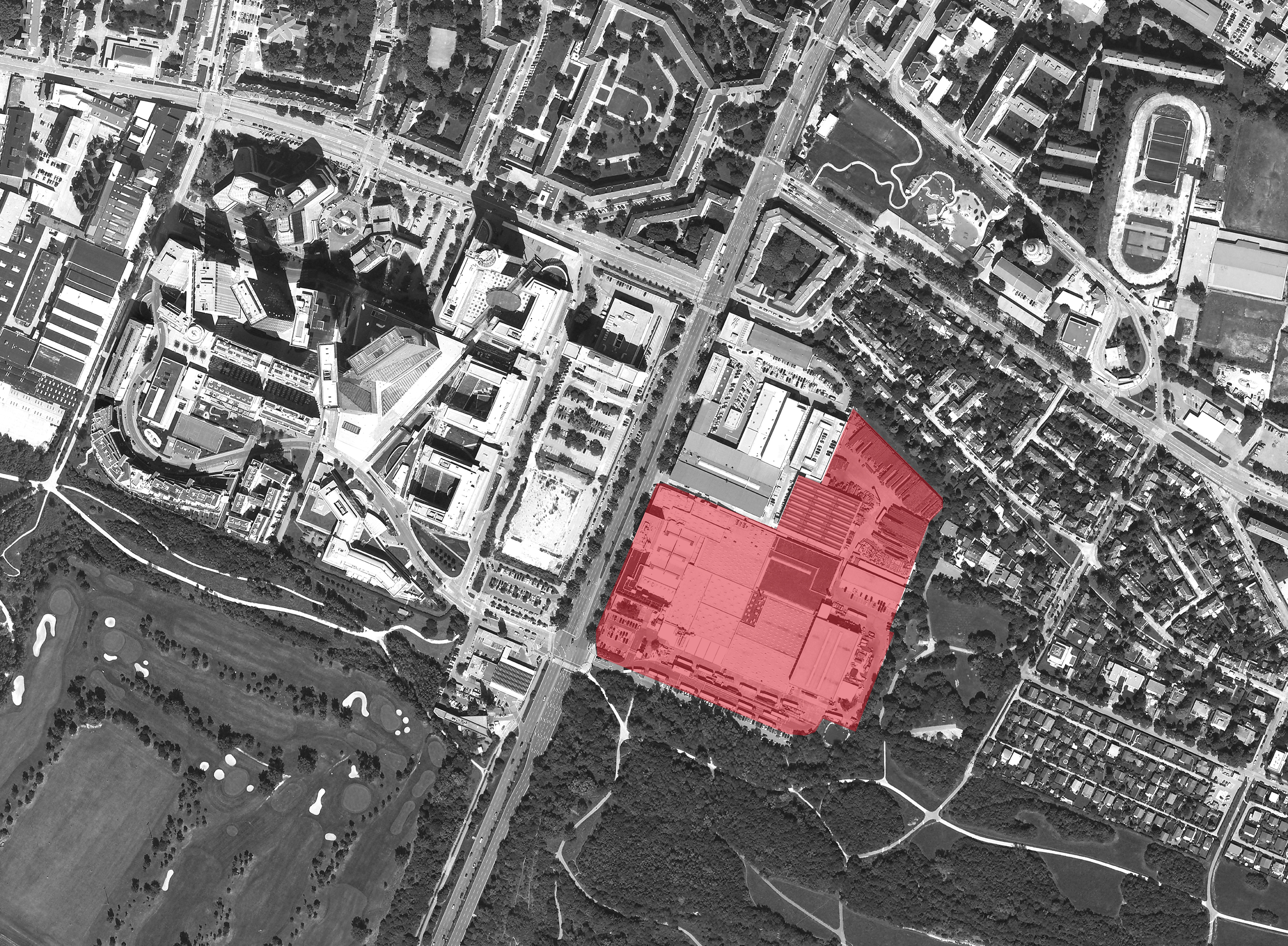
In an in-depth planning process, the property developers and architects, advised by an interdisciplinary team of experts, agreed to implement the Biotope City model for this new district. The whole process was supported by the Universit¥ of Natural Ressources and Life Sciences Vienna.

The precise planning of a biotope city with corresponding climatic effects was supported by the application of a new simulation model developed by the Viennese start-up company ‘Green4Cities’ – a method that finally gives architects planning security with regard to the effects of greening on temperatures and wind and which is now being used for projects in various countries.
In the meantime, the International Building Exhibition Vienna 2022 – IBA Vienna – has also chosen this project as a pilot project. You can read more about this very interesting and, to my knowledge, unique project on this scale here in a separate article on the history and criteria of planning. With another link you can get an insight into the brochure that will be handed out to new residents of Biotope City Wienerberg – a good detailed overview also for outside experts. The IBA has published a more detailed broschure too. I will limit myself to this conclusion: Biotope City Wienerberg is a model for a future-oriented, climate-friendly new quarter with affordable apartments in a pleasant green living environment. And generally spoken:
